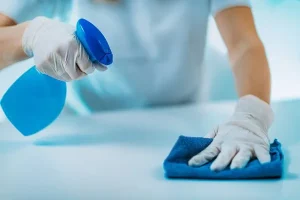
Common clothes infections. One of the fundamental needs of humans is clothing, which serves the primary purpose of shielding body parts from the elements, friction, hot or cold temperatures, insects, and dust. But what if the disruption originates from the clothing itself? Research indicates that clothing can spread disease because it serves as a haven for microorganisms, particularly if it is not cleaned thoroughly and correctly. Janecek also disclosed that washing clothes with water alone is insufficient because the bacteria in the fibers will still be present.
COMMON CLOTHES INFECTIONS
While we often associate infections with exposure to germs in crowded places or unsanitary environments, we may overlook the potential for harmful bacteria and pathogens to reside within our own clothing. From everyday garments to workout attire, various fabrics can harbor microbes that pose health risks. Understanding the common infections that can be found in clothes is crucial for maintaining good hygiene and minimizing the spread of illness.
1. Staphylococcus aureus

COMMON CLOTHES INFECTIONS
This bacteria commonly resides on the skin and can cause infections when introduced through cuts, abrasions, or contact with contaminated surfaces, including clothing. Staph infections can manifest as skin abscesses, cellulitis, or more severe conditions like MRSA (Methicillin-Resistant Staphylococcus aureus).
2. Fungal Infections
Moisture-wicking fabrics used in activewear create an ideal environment for fungi to thrive, leading to conditions such as athlete’s foot, ringworm, and yeast infections. These fungal infections can be transmitted through direct skin contact with contaminated clothing or shared items like towels.
3. Norovirus

Norovirus, a highly contagious gastrointestinal virus, can survive on surfaces for days to weeks, including clothing. Contaminated garments, particularly those soiled with vomit or fecal matter, can harbor the virus and facilitate its transmission through contact with hands or other surfaces.
4. Respiratory Infections
Respiratory viruses like influenza and rhinovirus can persist on fabrics such as scarves, coats, and sweaters, especially during cold and flu season. Close contact with contaminated clothing or touching one’s face after handling soiled items can increase the risk of respiratory infections.
5. Mold and Mildew

Clothing stored in damp or humid conditions is susceptible to mold and mildew growth, which can cause allergic reactions and respiratory symptoms in sensitive individuals. Fabrics like cotton and wool are particularly prone to mold growth if not properly dried and stored.
6. Head Lice
Head lice infestations are not limited to hair and scalp; they can also spread through shared items like hats, scarves, and coats. Lice and their eggs (nits) can cling to fibers in clothing, leading to reinfestation if not properly treated.
7. Gastrointestinal Infections

Pathogenic bacteria like Escherichia coli (E. coli) and Salmonella can contaminate clothing through contact with contaminated surfaces or improperly washed hands. Ingestion of these bacteria via hand-to-mouth contact or food handling can result in gastrointestinal illnesses.
Preventing the spread of infections through clothing requires diligent hygiene practices and proper garment care:

– Wash clothes regularly: Launder garments frequently, especially underwear, socks, and activewear. Using hot water and detergent to kill bacteria and fungi.
– Dry clothes thoroughly: Ensure garments are completely dry before storing them to prevent mold and mildew growth.
– Practice good personal hygiene: Wash hands frequently, especially after handling soiled clothing or using shared items in public spaces.
– Avoid sharing personal items: Minimize the exchange of clothing, towels, and other personal items to reduce the risk of infection transmission.
– Disinfect high-touch surfaces: Clean and disinfect laundry baskets, hampers, and washing machines regularly to prevent cross-contamination.
Summary
By staying informed about the potential risks of infections in clothing and adopting proactive hygiene measures. Individuals can mitigate the spread of illness and maintain a healthy environment within their homes and communities.